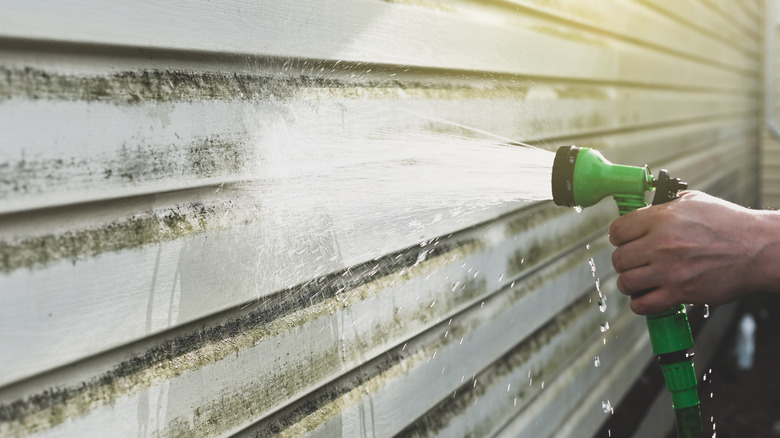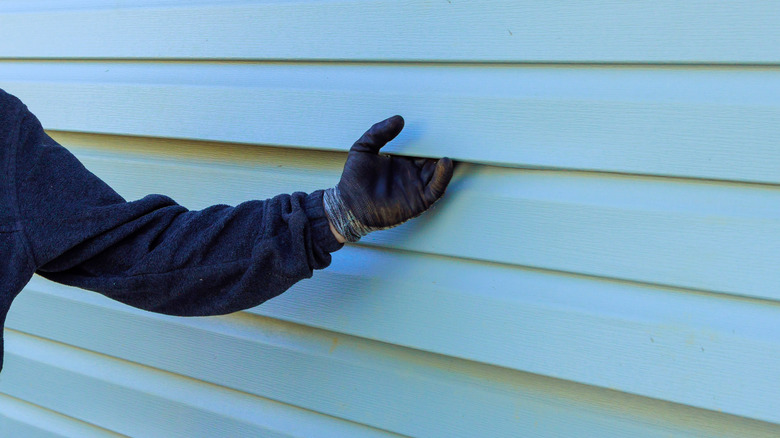The Best Way To Prevent Mold And Algae From Growing On Your Home's Siding
When you think about all the creative ways to boost your home's curb appeal, you probably land on giving your front doors a fresh coat of paint or planting a stunning, pollinator-friendly garden in your front lawn. But there's one area of your home that may need a bit of extra attention to keep it looking fresh all year round: the siding. Siding covers most of the exterior of your home and plays a major role in determining how polished or neglected the house appears. It can also be one of the first surfaces to fall victim to mold and algae growth, especially in damp or shaded spots. Even the cleanest home can start to look streaky or discolored if these invaders are given the chance to take hold. So how can you prevent mold and algae from growing on your home's siding?
Mold and algae thrive in moist, dark environments, and siding exposed to regular humidity or rain easily becomes a prime target. Without proper airflow or exposure to sunlight, these spots can leave your space looking unkempt as tiny green invaders take over. It isn't just about the aesthetics either, as unchecked mold growth can slowly degrade the siding material. What may start out as a simple cosmetic issue can potentially lead to rotting and interior moisture issues that threaten the structure of your home. The best way to prevent mold and algae-related issues is to understand where mold tends to grow, reduce moisture, and improve light access and air circulation. Keeping it off your siding isn't just about regular cleaning; it's about ensuring that it doesn't have the right conditions to thrive in the first place.
How to protect your home's siding from algae growth
The first step in protecting your home's siding from mold and algae is simply paying attention to it. Take a slow walk around your house and look for any signs of damage — cracks, warping, loose panels, or areas where water seems to be pooling. These are the spots that could have given algae a foothold on the home's siding. Pay particular attention to areas that get a limited amount of sunlight, like north-facing walls or spots that are hidden behind dense shrubs. If you're growing ivy on the side of your home, don't make the mistake of assuming that the siding remains safe. These plants can trap moisture under their dense foliage and even create cracks in your siding, producing yet another hazard for the security of your home. Inspect these areas every few months or after excess rainfall to get ahead of the problem. The sooner you spot these issues, the more likely you are to prevent damage to your home.
Once you've identified troublesome spots, take some preventative action. Start by trimming overgrown branches or hedges that may be blocking sunlight and airflow to the siding, as both are essential for keeping the surface dry. Make sure your gutters and downspouts are free from any blockages that may spill over and soak the home's exterior walls. A gentle power wash once or twice a year can help remove grime and kill off early mold. If you notice early signs of growth, use oxygen bleach and water to remove algae from the home's siding. After cleaning, apply a mold-resistant treatment to act as a protective barrier, making it difficult for spores to find a new foothold.

